Low Vision
Low Vision
What is low vision?
Low vision is a condition in which refractive error cannot be corrected by wearing eyeglasses, medicines and surgery.
When should Patients get counselling for low vision?- When it is difficult for patient to do his routine
- When patient stumble on objects on the way while walking
- When patient find a dark spot in his visual field
- When patient feel difficult to see during night
- When patient cannot see the objects on the peripheral side
Practical Tips for Low Vision Patients
People with low vision often feel frustrated and sad. It is difficult for their families and friends too. Help is available. Low Vision staff can provide counseling, guidance and training to patients and their family members. Below are some tips to help patients and their family members with everyday activities.
Lighting
- The strength and type of light is very important.
- Use a flourescent light.
- Use lamps where closed work areas, such as reading lamps at the time of reading.
- Fix a bright lighting over stairways; places where accidents are likely to occur.
- Make sure the lighting level is the same throughout the house, to reduce shadows and bright spots.
- When arranging a room for reading or working, don't face the window; make sure to face that the window is behind reading or working location.
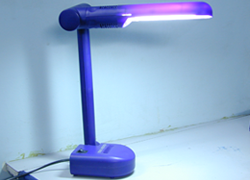
Creating Contrasts With Color
- Mark the edges of doors, windows with contrasting colors and mark the edges of stairs with stripes.
- Floor coverings and tablecloths should be in one color so that objects can be easily seen. Avoid patterns. Make sure the furniture is in a different color from the wall.
- Placing a white towel on the back or arm of a chair will help to see the chair.
- To more easily identify clothes in the cupboard, use large labels or separate them by dark & light colors.
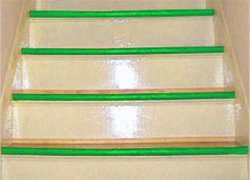
Telephone
- Find a phone with an oversized keypad.
- Make a keypad with large print Braille or raised numbers in a contrasting color.
- If you have a cell, program in the frequently called numbers and assign unique tones to frequently received callers.
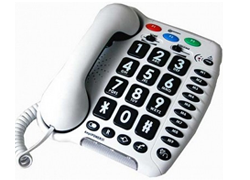
Eating and Preparing Food
- Use a dark color cup for light color liquids such as milk and a light cup for dark liquids such as coffee; the contrast will help to see when the cup is full.
- Use a tablecloth without a pattern that contrasts with the dishes.
- Find or make a cutting board with 2 sections; one dark, the other light. Use the light color one for cutting dark vegetables, such as chilies, and the dark side for light color vegetables such as garlic.
- Smell, taste and feel to identify foods.
- Use different size containers to store rice, dhal, spices, etc.
- Use the clock technique to help you identify where the food is located on your plate, for example: place a cup in the 10 o-clock position, curry in the 2 o-clock position, etc.

Recreation
- Use playing cards with large numbers and specially designed game boards for games such as chess.
- Use talking video games.
- Use low vision aids such as a magnifier or Closed Circuit Television for reading, sewing or other close work.
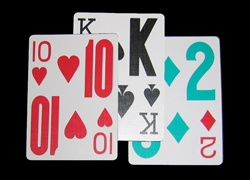
Mobility
- Prior experience of familiar landmarks will help to walk safely.
- Use a cane to help find holes on the road and locate the edges of steps.
- Use a torch at night and swing it back and forth in front to help see obstacles.
- If you are uncertain when it is safe to cross a street, ask for help.
- If walking with another person, hold on to his or her arm above the elbow and walk about half a step behind.
- To help you walk at night, do not look at the car headlights. Look down at your feet, and carry a torch.
- To move about more safely when side vision is poor, practice looking to the left, to the right and down.
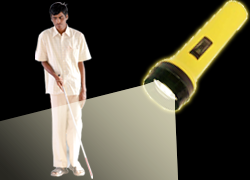
Written Communication
To help write straight on a line, cut a rectangular window into a piece of cardboard; place the cardboard so that the window is directly above the space where you wish to sign your name or write.
To help you identify documents or labels, use a black felt tip pen and write in large print.
Money Handling
- All coins are different. Practice to identify different coins with sizes. Have someone hand you coins one by one; focus on the differences in size, thickness, and edge.
- All rupee notes are different sizes. A Notex, as shown in the picture will help you identify notes.
- Each note can be identified by how it lines up with the steps of the Notex.
- Align the note to the upper left corner of and behind the Notex. Each note will align differently along the steps on the right hand side of the Notex.
- The 1st step corresponds to the 500 note, the 2nd step to the 100 note, 3rd cut to the 50 note, and so on.
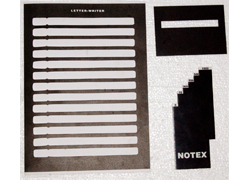
Telling Time
Clocks and watches with large black numbers, talking clocks and watches, and Braille watches are available.
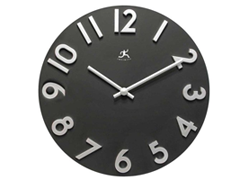
Grooming
- Teeth
Place your finger next to the bristles of your toothbrush as a guide for applying the right amount of toothpaste. - Shaving
Locate landmarks such as a specific point on your ear. The hand not holding the razor can help decide areas to shave and not to shave. - Washing
Use bright or dark colored soaps that contrast with your sink. Use towels that contrast with your wall. - House Keeping
Remind your family to keep furniture in the same place and to put items back in their places.Remove floor mats or tape them to the floor.
Clean one area of the room at a time; put the cleaning solution on a cloth, not directly on the area to be cleaned
Source: Aravind Eye Care
Last Modified : 4/1/2020
Test page for Keyword Id mapping
This page covers tips to save energy.
This topic provide information about Broiler Produ...
This topic provides information about Low Carbon L...
